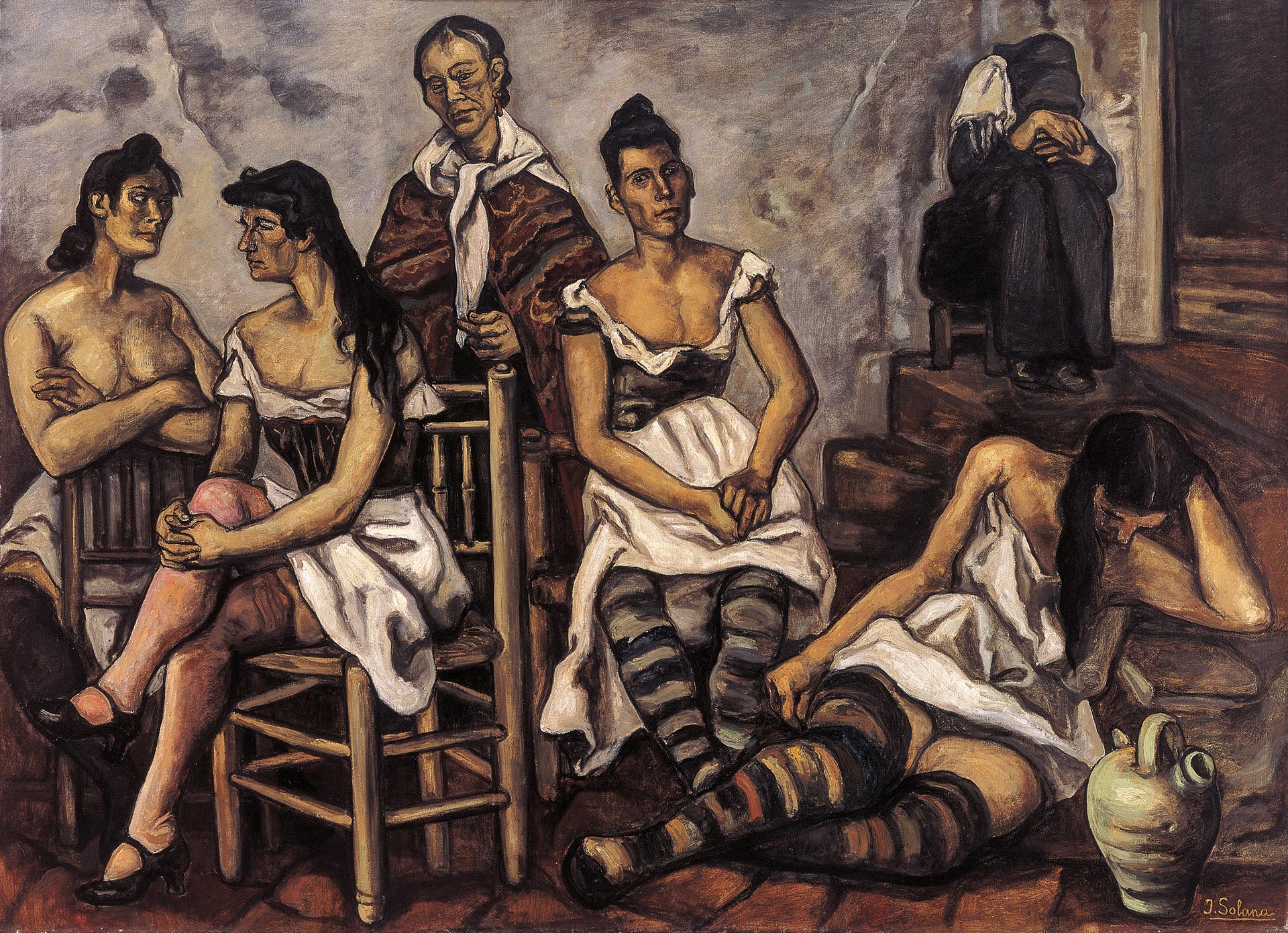
José Gutiérrez Solana (Madrid, 1886-1945)
The Slum Brothel (The Slum Girls)
circa 1934
WORK INFORMATION
Oil on canvas, 160 x 230 cm
OTHER INFORMATION
Signed in the lower right-hand corner: "J. Solana" Inscription in black on the reverse, on the stretcher: "La casa del arrabal / José Solana"
As with most of Solana’s depictions of women, the figures here are coarse, unattractive and anonymous, only identifiable by the type of work that they engage in. As such they offer a marked contrast to the dashing, elegant appearance of most of his male subjects.
Solana’s difficult relationship with women was the consequence of his own circumstances. His mother suffered from mental illness while he himself fell in love with a woman who did not return his sentiments, as a result of which he remained a bachelor and lived with his brother Manuel. Solana’s problematic vision of women has been the subject of numerous studies by critics such as Sánchez Camargo and Rodríguez Alcalde as well as by psychiatrists such as Dr. López Ibor and Professor Rof Carballo.
In fact, Solana’s sympathies were always with the most downtrodden women in society. He frequently visited the famous brothels on calle Ruamenor in the slums of Santander and depicted one of them in this painting of 1934, The Slum Brothel, of which at least five versions are known. He also described this brothel in his writings in chapters such as “Brothels” or “The Street of Ceres”.
In both his writings and paintings Solana thus transports us to the sordid, poverty-stricken environments of the brothels where the women lived their miserable lives in a state of indifference. Neither young nor beautiful, they are simply anonymous “women of the street”. Their profession is made clear by their semi-naked bodies, clothing and stockings with broad stripes. The madame of one of these brothels appears here in the middle of the composition. Claudia Alonso was an unattractive woman whose forceful personality had attracted the attention of other artists such as Francisco de Cossío and Moya del Pino.
Solana made use of the clothes and bodies to paint this work in a rich ranges of reds, greens and blues, while the white of the underclothes gives the entire composition a light and vitality that is in fact alien to the actual scene depicted.
María José Salazar

